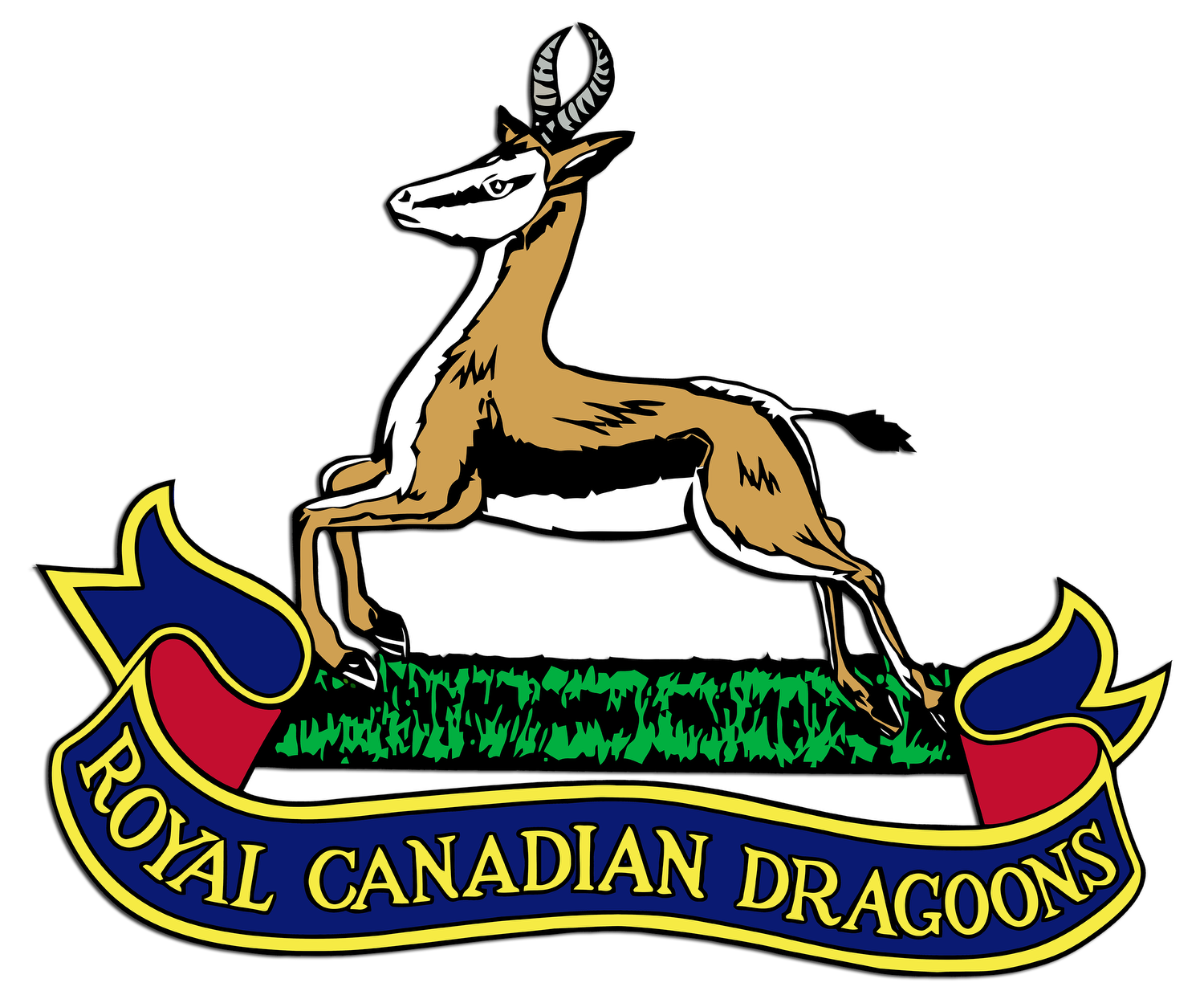Leliefontein
7 November 1900 – Three Victoria Crosses In the Action at Leliefontein
Reveille was sounded at 0130 hours, the morning of 6 November 1900. The men of Major-General Sir Horace Smith-Dorrien’s column, 1200 strong, wearily saddled-up and began their advance to the south. They were trying once again to secure the Komati River basin. Among this column, were the 2nd Battalion, Canadian Mounted Rifles (CMR), two squadrons of the British 5th Lancers, six field guns (two from the Royal Canadian Field Artillery’s “D” Battery), two 5-inch oxen-drawn howitzers, a detachment of British infantry, a section of two 1 Pounder “pom-pom” guns and The Royal Canadian Dragoons.
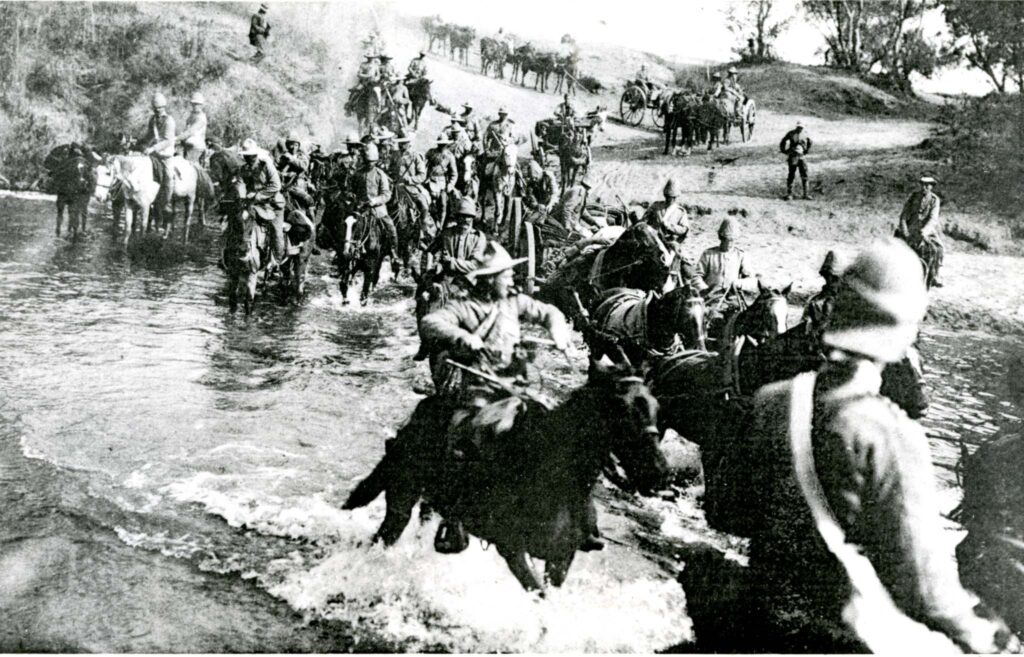
By November of 1900, The RCD had been in action for six months through the wet, miserable South African winter. Their numbers had dwindled due to disease, death and wounding in action from an established strength of 371 to 96 all ranks. Instead of riding handsome Cavalry chargers, they were mounted on shaggy Argentinian ponies. Their original canvas uniforms had been worn out, replaced by British wool serge tunics and whipcord riding breeches, but the original wide-brimmed “Prairie” (or Stetson) hats soldiered on. Yes, Lieutenant-Colonel Francois Louis Lessard’s Dragoons had come a long way; both the cool professionals and eager volunteers alike had become as one in a unit that enjoyed the reputation of being amongst the finest horse-soldiers the Empire fielded in South Africa. Although under-strength, the Dragoons consistently performed the dangerous and demanding duties of vanguard or rear guard, depending on the tactical situation.
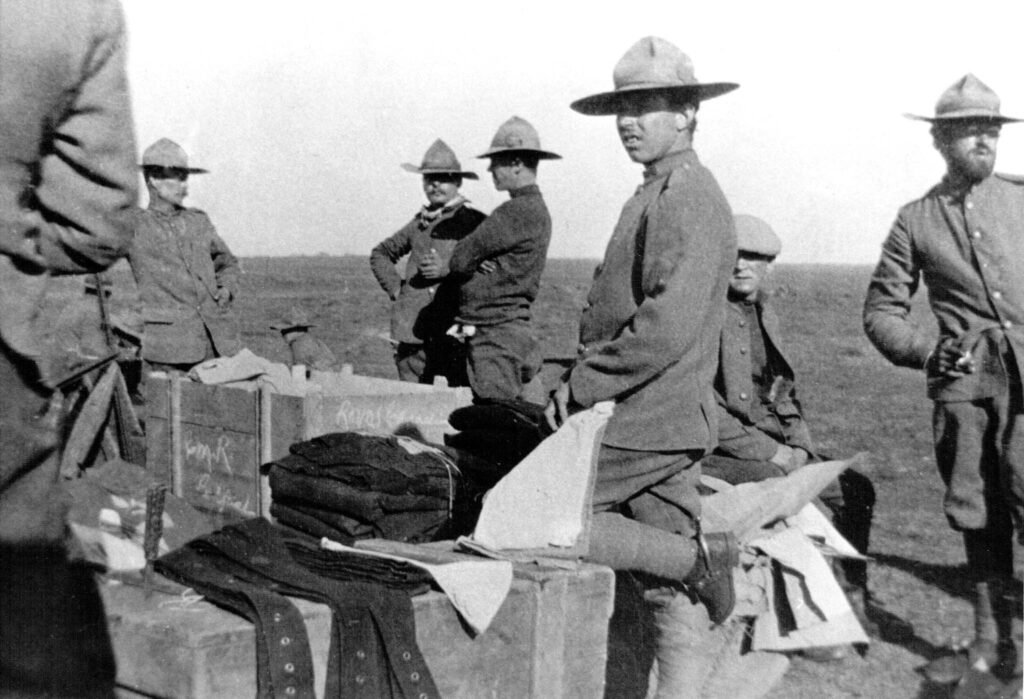
The morning of 6 November 1900 brought the first contact of a series of engagements which became known as the Action at Leliefontein. The vanguard of the column was delayed in its advance by a screen of Boer sharpshooters in the vicinity of Eerstelingfontein. This delaying force was intent on buying time for the main body of burghers, who were trying to establish a defence in depth. Smith-Dorrien’s column was able to make headway by using a skirmish line of mounted riflemen, operating under the covering fire of the artillery, to push the Boers south towards the Komati River. The Boers withdrew in contact until sufficient time had been allowed for them to evacuate their laagers north of the Komati and then broke clean.
As the column crossed a stream known as the Witkloofsprit, they came under murderous fire from the heights of the Witkloof escarpment. Two companies of British infantry, aided by a dismounted troop of Dragoons, tried without success to evict the Boers from their positions. As long as the Boers were able to raise their heads, their flat-shooting Mauser rifles would make short work of any frontal attack. The artillery began to fire time-fused shrapnel shells into the Boer position, but were only able to partially suppress the Boer defenders due to the nature of the ravines and the escarpment they were occupying.
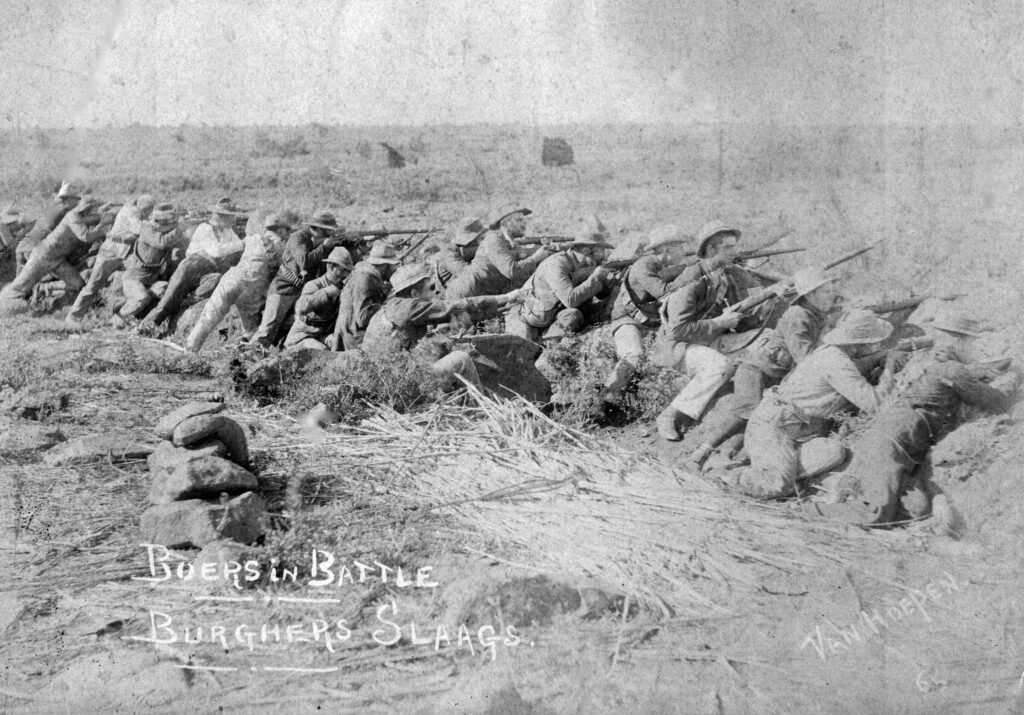
At 1400 hours, Smith-Dorrien dispatched a force consisting of The RCD, the two Canadian field guns, the “pom-pom” guns and two British rifle companies to flank the Boers. This maneuver force struck out toward the south-west on the high ground toward farm at Leliefontein (“lily farm”). They contacted the left of the Boer line in a gully, and through the rest of the afternoon shot it out with the Boers while working their way around them. Seeing that their escape route was threatened, the Boers withdrew to the south towards the village of Carolina.
That evening the men of the RCD loaded their wounded into horse-drawn ambulances to start the bone-jarring, sometimes fatal ride back to Belfast. The wounded and horses looked after, the Dragoons settled down to their night routine at the farm named Leliefontein.
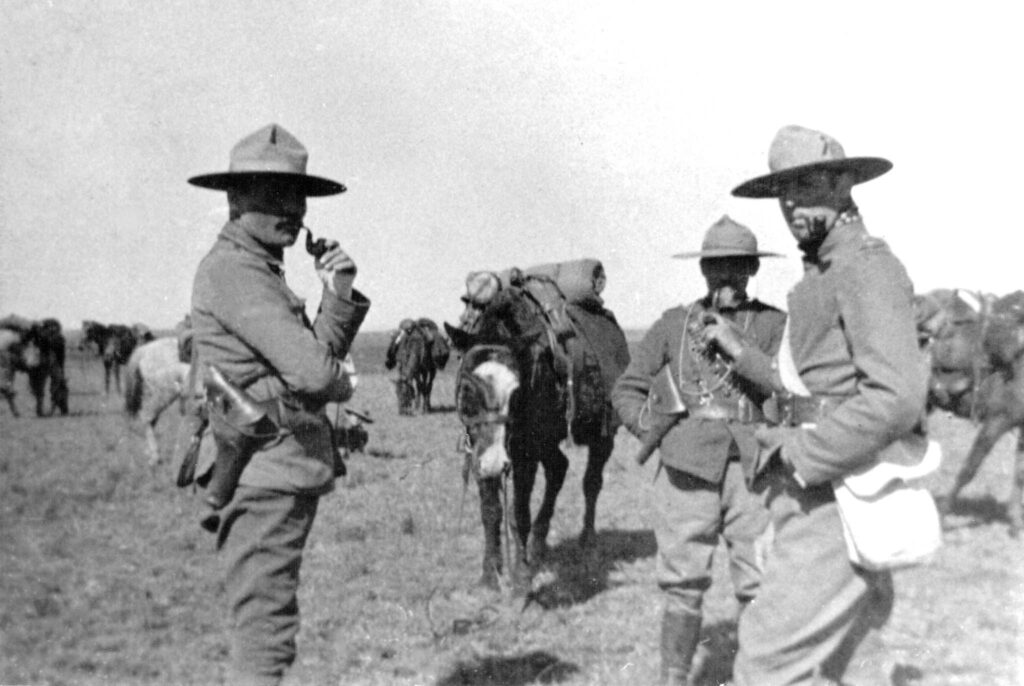
On the morning of 7 November 1900, Smith-Dorrien decided to return his flying column to Belfast. During the night, the Boers had gathered reinforcements and prepared to defend the town of Carolina against the Empire’s forces. Lieutenant-Colonel Lessard and his Dragoons were given the task of acting as the rear guard, to allow the main body of the column to withdraw unmolested. The Dragoons were covering a frontage of a mile and a half with 90-odd men and two field guns. Their rear was covered by the 2nd CMR, but as the CMR hurried to the north east to screen the right flank of the column, the Boers took advantage of the opportunity to scurry up onto the high ground at the left side of the RCD screen. Simultaneously, more Boers were seen advancing from the south-west.
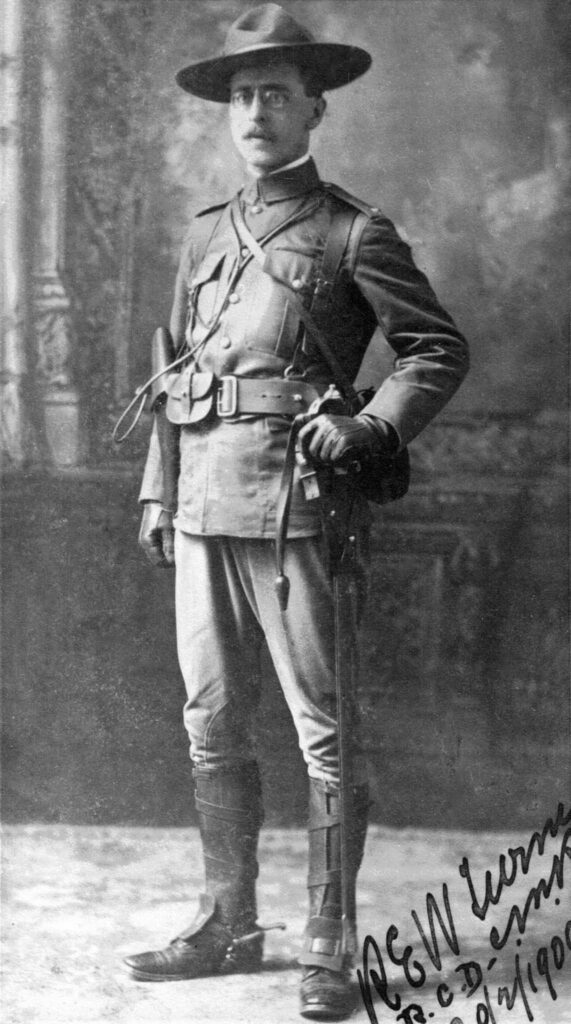
Lieutenant Richard Ernest William Turner of Quebec City, eyeing the Boers gathering on the high ground to his rear, ordered his men to withdraw only when the guns had been, withdrawn. Once the guns had taken up new positions, Turner and his men mounted and galloped up to the positions the guns had vacated, being pressed hard the whole time by the Boers.
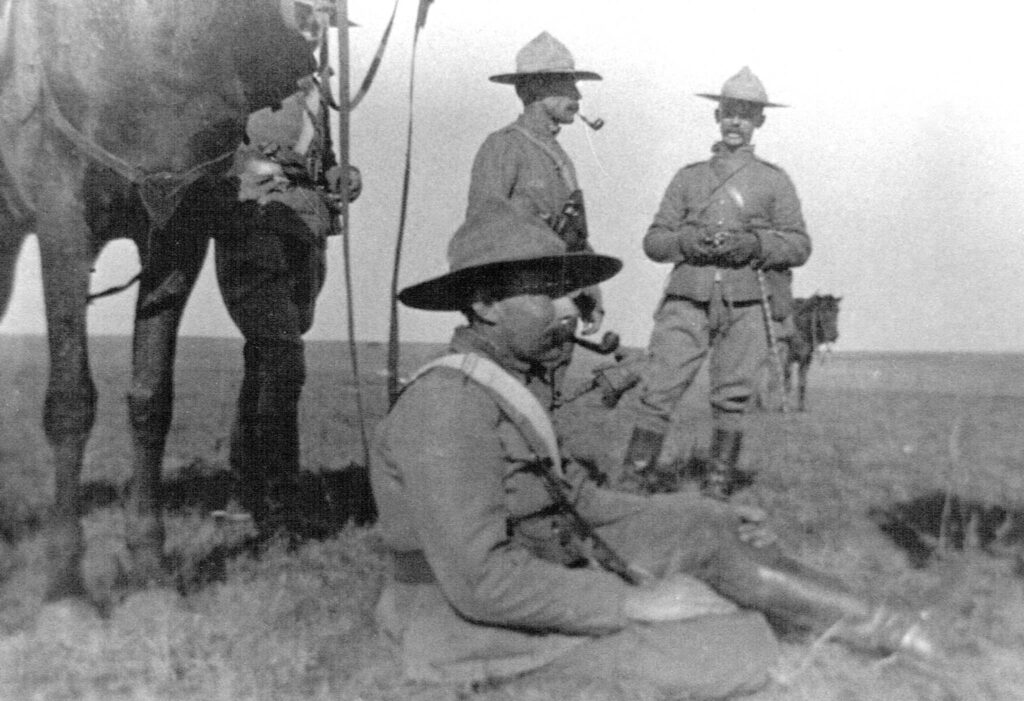
Lieutenant-Colonel Lessard could see that his right flank, where Lt Hampden Zane Curchill Cockburn and his men were fighting a gallant, but losing, battle was in danger of being overrun. Lessard dispatched one section of the guns under Lieutenant E.W.B. Morrison of Ottawa to the right flank. The 12-Pounders had no sooner gotten into action when Lessard galloped up. Pointing to their left rear where the Boers were moving to cut them off, Lessard cried “For God’s sake Morrison, save your guns!”
To cover the escape of the artillery’s guns, Lieutenant Cockburn committed the remainder of his two troops. A line of Boers a mile long was galloping across the plain, firing from their mounts. The wave broke over Cockburn and his brave band. None would escape either death, wounding or capture.
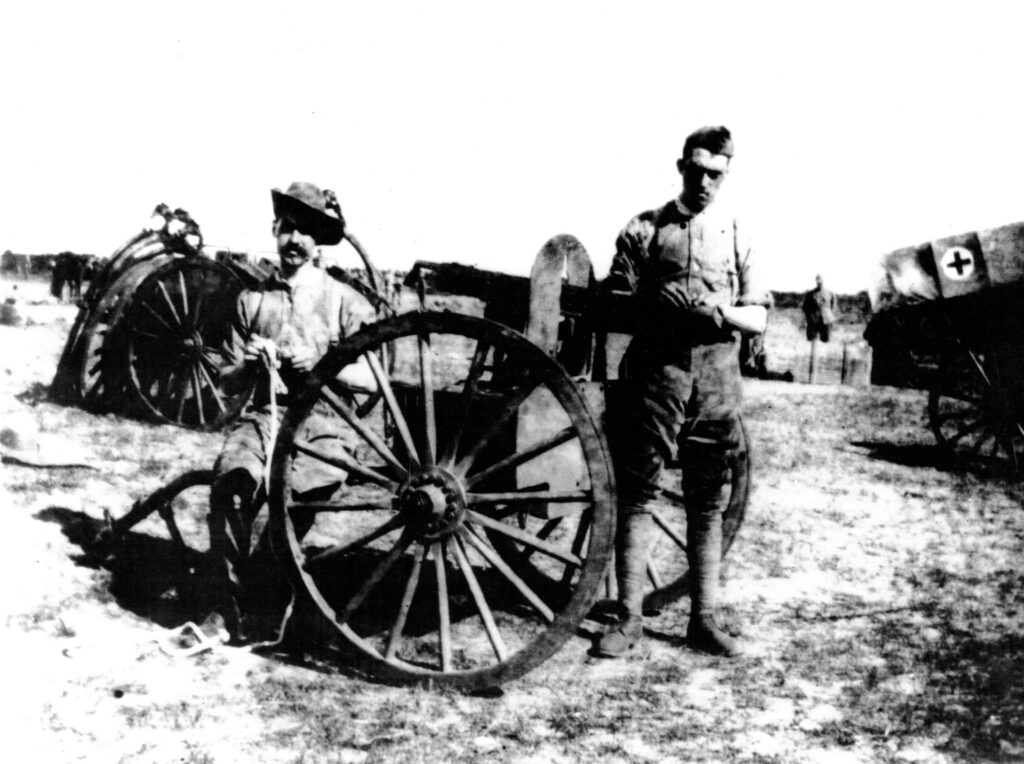
The gunners, their horses winded, were desperately trying to get their guns away. Halted by Lieutenant Turner, they engaged the enemy at two hundred yards while the by then twice-wounded Turner tried to get help from the British infantry. At this time, Turner’s men were joined by some from the left flank, and, along with Ottawa’s Sergeant Edward James Gibson Holland’s Colt machine-gun, took a terrible toll on the Boers. Boer leaders General J.C. Fourie and Commandant H.R. Prinsloo fell to Holland’s Colt.
As the Boers descended upon the Dragoons, Holland’s gun jammed. He looked for the limber horse, but she was farther away than the Boers. He calmly removed the red-hot Colt gun from its two wheeled carriage, tucked the gun under his arm, mounted a nearby horse and galloped away pursued by Boers for some 700 yards.
By this stage of the battle, the Dragoons were in a wild melee with the Boers all across the plain. The Boers had closed to within 300 yards of the D Battery guns again. Lieutenant Cockburn was lying wounded under his dead horse. Morrison and his gunners were coaxing herculean efforts out of their poor, lathered horses. Lieutenant Turner, shot in the neck and arm, gathered his men together from the battle on the left flank. Numbering less than a dozen all told, they threw themselves from their mounts and poured a withering fire into the Boers at close range.
Morrison and his guns had caught up to three companies of British infantry, whose commander refused to help the Canadians saying “I can’ t do anything.” Finally, help arrived in the form of Lieutenant-Colonel Thomas Evans, RCD, and his 2nd CMRs. Numbering only sixty, the CMRs and the surviving Dragoons fought the Boers to a halt. Allowing Major-General Smith-Dorrien’s column to withdraw safely.
At the end of the day, the Dragoons took stock of the price paid by the Regiment. Three dead, eleven wounded, eight of those seriously injured and sixteen captured. Over thirty per cent of the Dragoons in action at Leliefontein were casualties of one form or another.

The Victoria Cross, the highest award for bravery and valour in the Nritish Commonwealth, is a rather plain cross of bronze on a purple ribbon. It reads simply “For Valour”. In all, four Dragoons were recommended for the VC as a result of their bravery at Leliefontein. Lieutenants Cockburn and Turner and Sergeant Holland were awarded the Victoria Cross. Trooper Knisley, recommended for the VC for rescuing a fellow Dragoon whose horse had been shot out from under him, received the Distinguished Conduct Medal. Lieutenant Morrison, of the D Battery, Royal Canadian Field Artillery, received the Distinguished Service Order. The Distinguished Conduct Medal and the Distinguished Service Order both rank immediately below the Victoria Cross in the system of honours and awards in place at the time.
The achievement of The Royal Canadian Dragoons at Leliefontein, the winning of three Victoria Crosses in a single action has only been surpassed once. The defenders of the mission station at Rorke’s Drift, B Company of the 2ndBattalion, 24th (2nd Warwickshire) Regiment of Foot, won eleven VCs in 1879, also in South Africa.
On 12 December 1900, the Dragoons boarded the SS Rossylyn Castle to return to Canada. They had marched for 1700 miles and had been in action for 44 days in 29 separate engagements.
